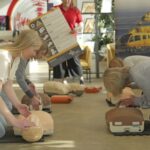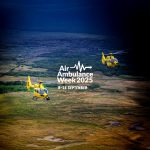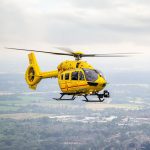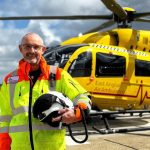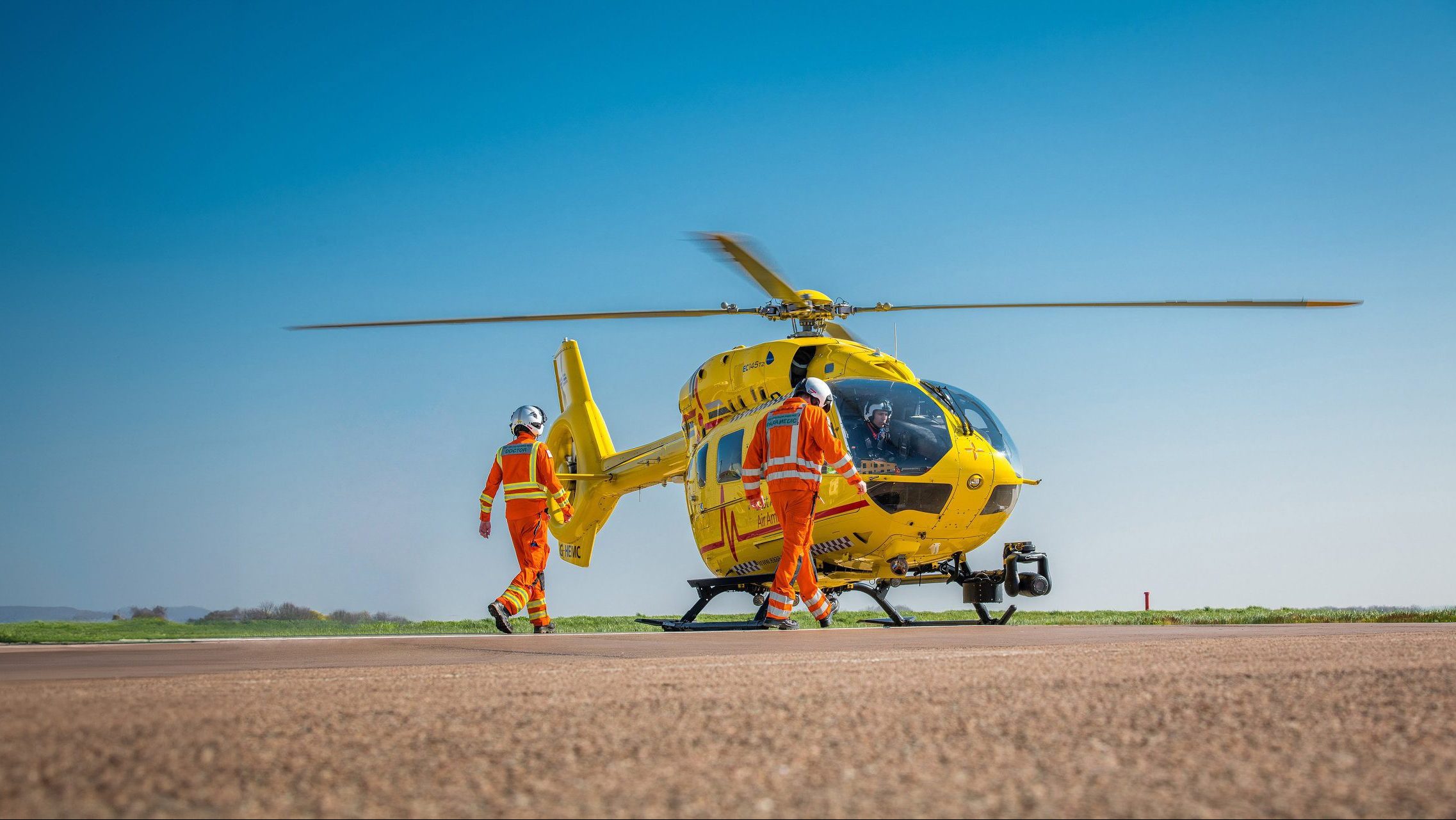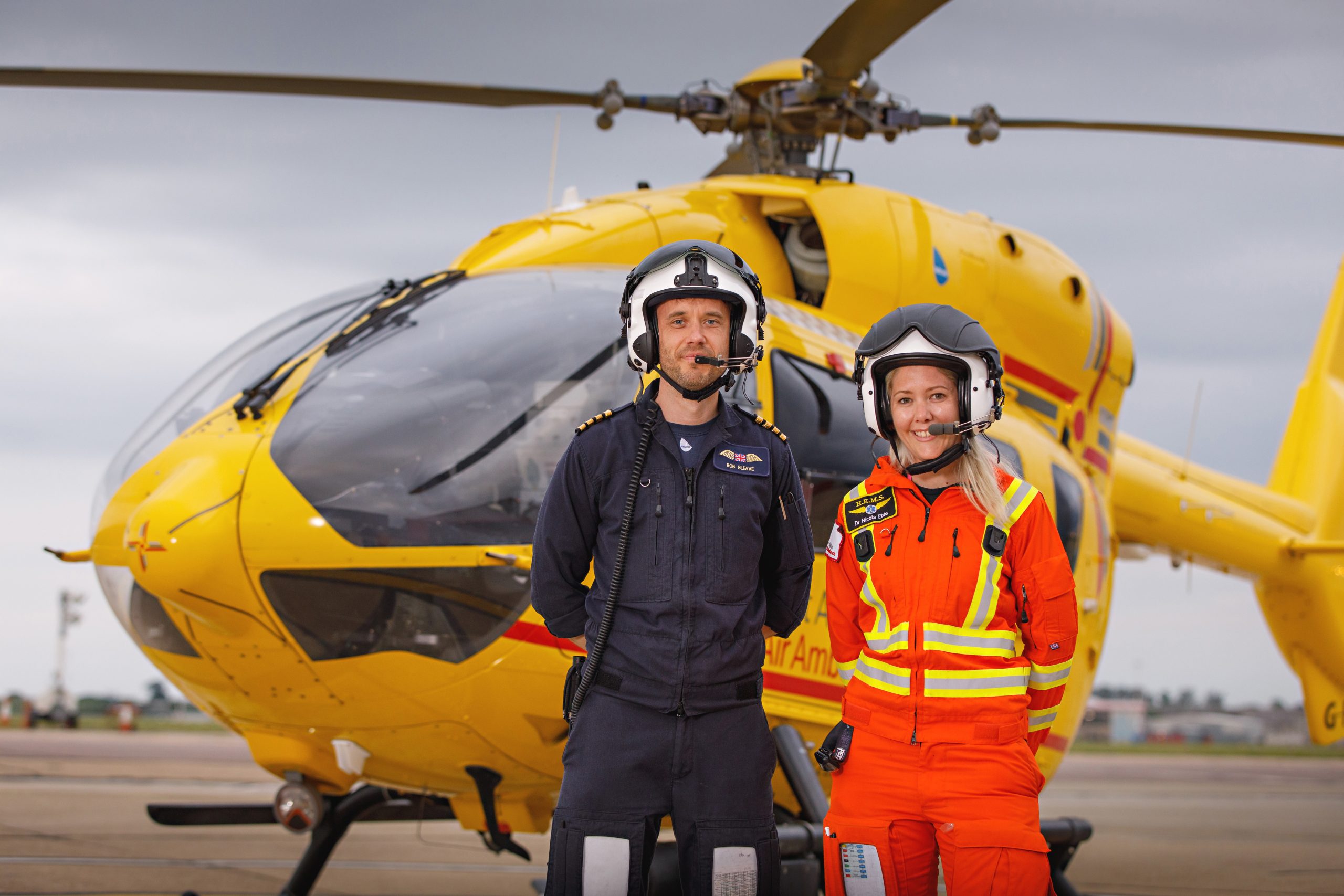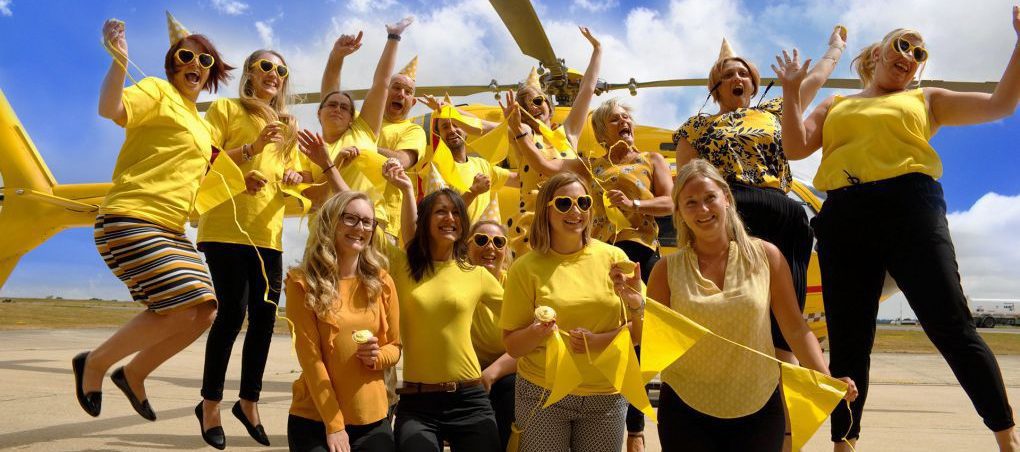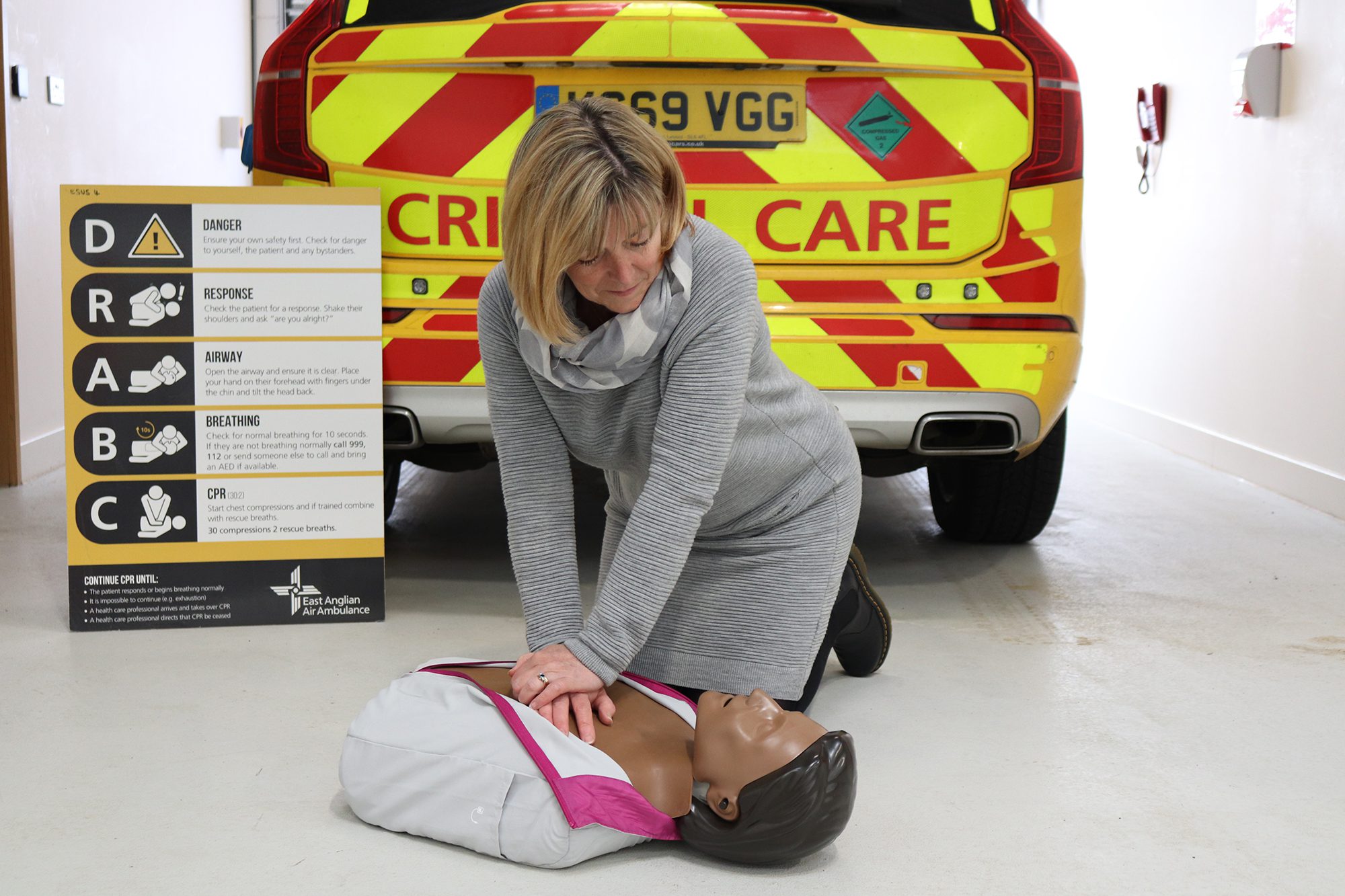17 May 2024
25,000 patients treated by EAAA
East Anglian Air Ambulance (EAAA) has this week marked a milestone of treating 25,000 patients since its inception in 2000. This has only been possible thanks to the kind support of others.
EAAA receives no regular government funding, provides advanced critical care 24 hours a day, 365 days a year to the most seriously ill and injured people in the region by air and road. It relies almost entirely on public donations to save lives by air and road across Bedfordshire, Cambridgeshire, Norfolk and Suffolk.
Six-year-old Caitlin Walters from Norfolk is one of those who was treated by EAAA in August 2022 when she was severely injured when helping to feed a family member’s horses with her Mum, Sophie and little brother, Ryan.
“The horses had been fed and shut away in their stables so the children could have a little run around in the field. Caitlin was standing about three metres in front of the stable door when, we can only assume one of the horses was stung by something like a horsefly. It bolted straight through the stable door towards Caitlin. The horse went straight over the top of Caitlin. It had hit her before she even knew what was happening.” Mum Sophie says.
In addition to a land ambulance, East Anglian Air Ambulance (EAAA) was tasked as, if Caitlin had suffered head injuries, she may need to be transferred to a trauma centre.
“Shortly after the road ambulance arrived, we heard the helicopter above us. It had been just 18 minutes,” Sophie continues.
EAAA’s Dr Dave and Critical Care Paramedic (CCP) Chris administered advanced pain relief to Caitlin and decided that Caitlin should be flown to the Norfolk and Norwich Hospital as it would be best placed to treat Caitlin’s injuries.
At the Norfolk and Norwich Hospital, a Neurologist thankfully ruled out head injuries however a significant injury to her hand was a major cause for concern.
Caitlin had an operation to try to repair her ligaments and bone. She then had 48 hours of intravenous antibiotics to reduce the chance of infection before undergoing a further operation to repair the nerves in her thumb. In total, she spent five days in hospital and made a full recovery.
Sophie adds: “The outcome could have been very different if things had taken longer. The advanced pain relief and speed of getting Caitlin to the right people at the right hospital was crucial.”
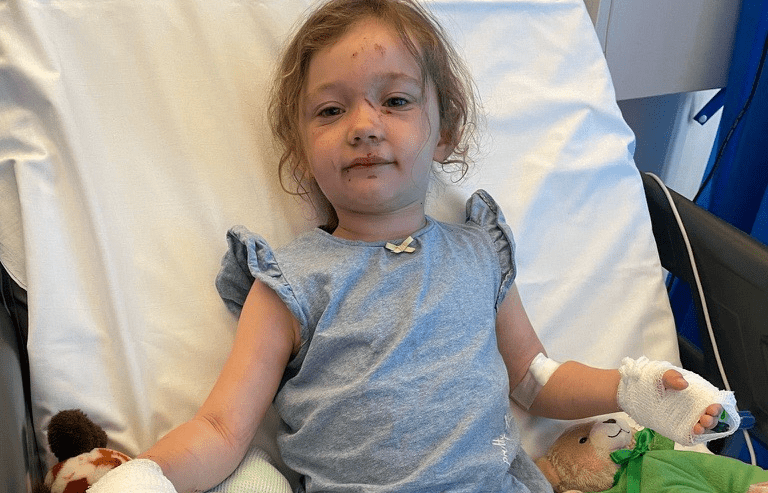
“The outcome could have been very different if things had taken longer. The advanced pain relief and speed of getting Caitlin to the right people at the right hospital was crucial.”
Sophie, Caitlin’s Mum
David Durrant from Ely is another of those who was treated by EAAA when he suffered a life-threatening cardiac arrest in November 2022.
“It was the evening of 5 November, and I was walking to the shops,” David explains. “I remember the traffic being heavier than normal due to it being Bonfire Night. I hadn’t felt different or noticed anything unusual, but the last thing I remember was walking past a pub and reaching the corner of a road. “Then somebody saw me drop down to the ground.”
When the East of England Ambulance Service (EEAST) crew arrived, David was transferred from the roadside into the back of the ambulance, where they used a defibrillator to shock him four times to restore his normal heart rhythm. In the meantime, East Anglian Air Ambulance (EAAA) were called.
“Dr Patricia, Dr Ben and Critical Care Paramedic Andy from EAAA Anglia Two (Cambridge) reached me quickly by Rapid Response Vehicle.” David says.
The crew gave David the critical care he needed at the scene to give him the best chance of surviving and recovering. This included sedating him and using a ventilator to take over his breathing ready to accompany him on the journey to hospital.
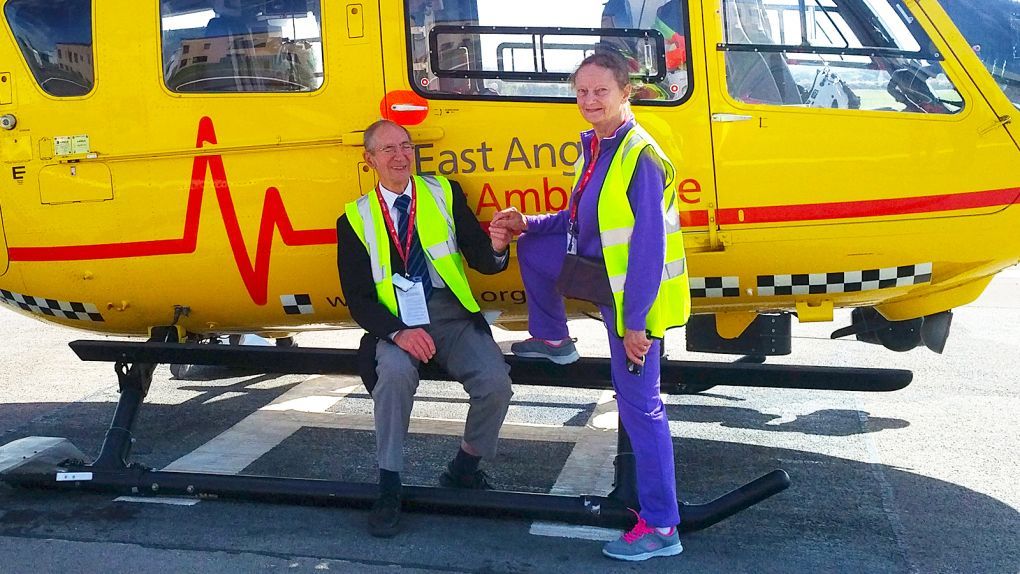
From road traffic collisions to cardiac arrests to medical emergencies, EAAA’s specialist doctors, critical care paramedics and pilots bring the advanced skills, equipment and medicine directly, normally only found in a specialist emergency department, to the patient’s side in the fastest time possible.
The equipment carried by EAAA’s helicopters and rapid response vehicles enables enhanced care at the incident scene when the patient needs it most such as blood transfusions, advanced pain relief, sedation and anaesthesia, and surgical interventions.
David is now doing well. He and his wife go dancing a couple of times a week. He swims regularly, aiming to do 50 lengths. Because he was unable to drive for six months after being fitted with an implantable cardioverter defibrillator (ICD) in hospital, he has also done plenty of walking. “I’ve worn out a pair of shoes!” He laughs.
Matthew Jones, CEO at East Anglian Air Ambulance says: “Treating 25,000 people in our region since 2000 is a remarkable milestone for the charity to reach and we are both proud and grateful that we have been able to help so many people when they needed us most. It has only been possible thanks to incredible support from the individuals, businesses and communities who continue to go above and beyond to fundraise, donate and volunteer to save local lives. Their kindness and impact is extraordinary – and gives every patient treated by EAAA the best possible chance of surviving and recovering a life-threatening emergency.”
David adds: “The care EAAA gave me was excellent and efficient. I am so glad they were there! You never know what might have happened otherwise.”
A heartfelt thank you for your life-saving kindness and support.
